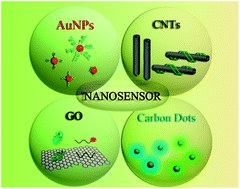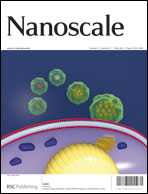Recent progress in nanosensors for sensitive detection of biomolecules
Abstract
Developing sensitive, rapid, and cost-effective methods for detection of biomolecules is important for both clinical and numerous non-clinical applications. During the last two decades, functional nanomaterials with unique physical and chemical properties have provided significant advantages for biological detection. In this feature article, we introduce recent progress in nanobiosensor development by exploiting the optical, electrical and catalytic properties of a range of nanomaterials, with a focus on


 Please wait while we load your content...
Please wait while we load your content...